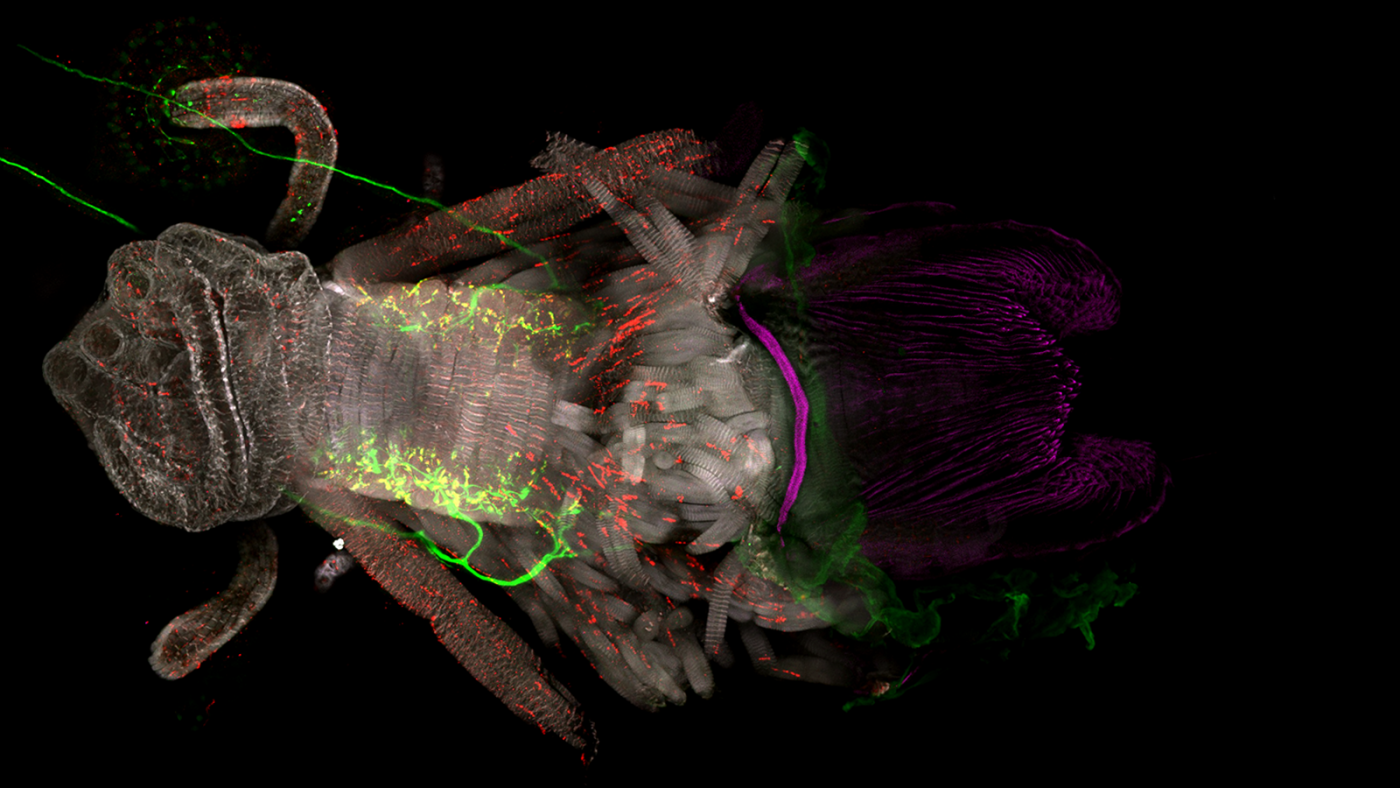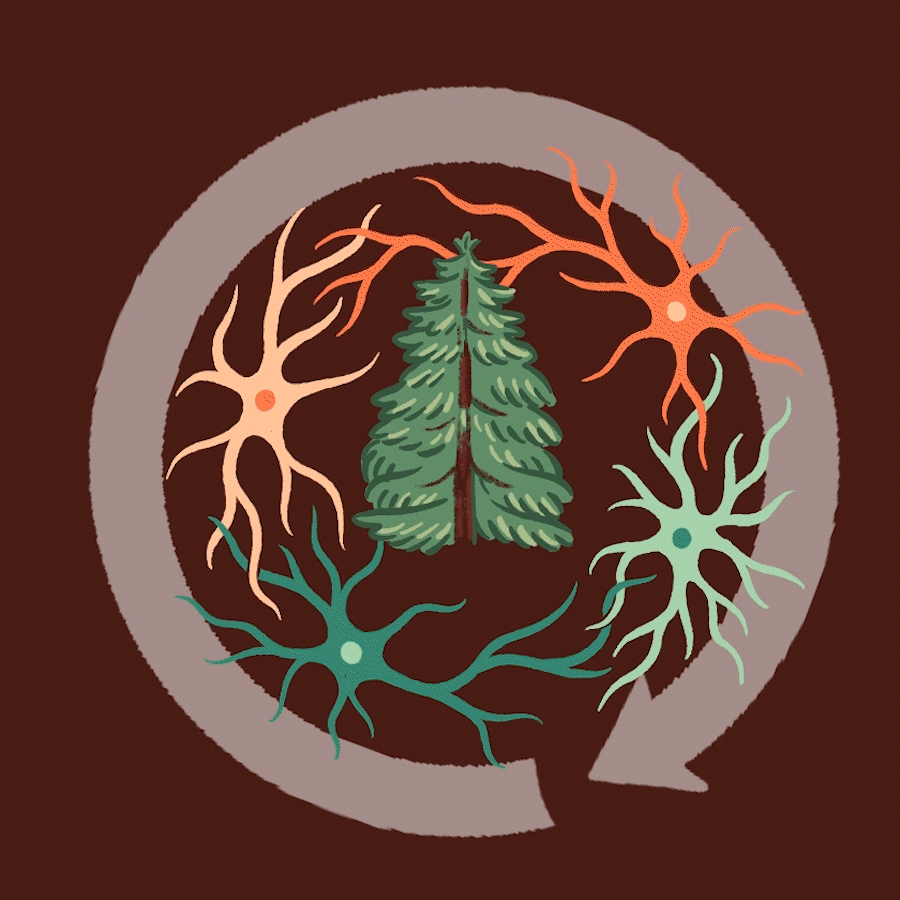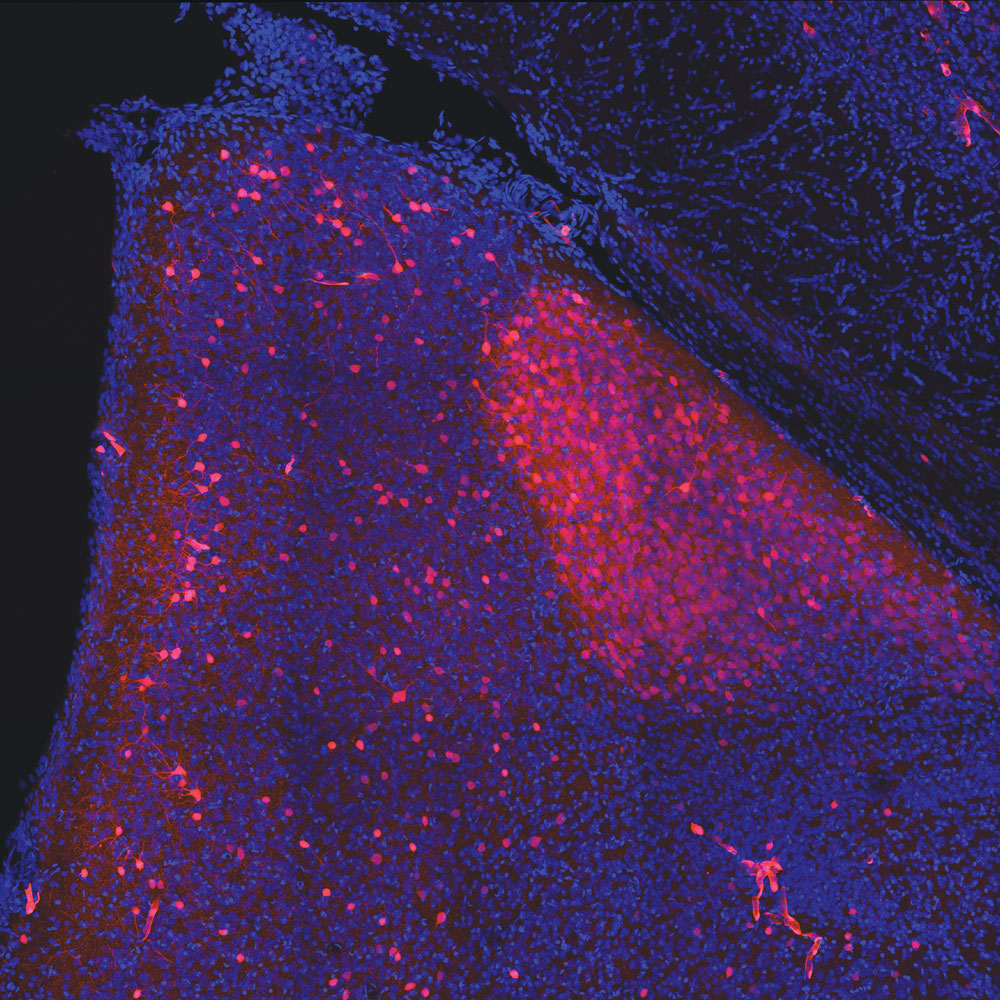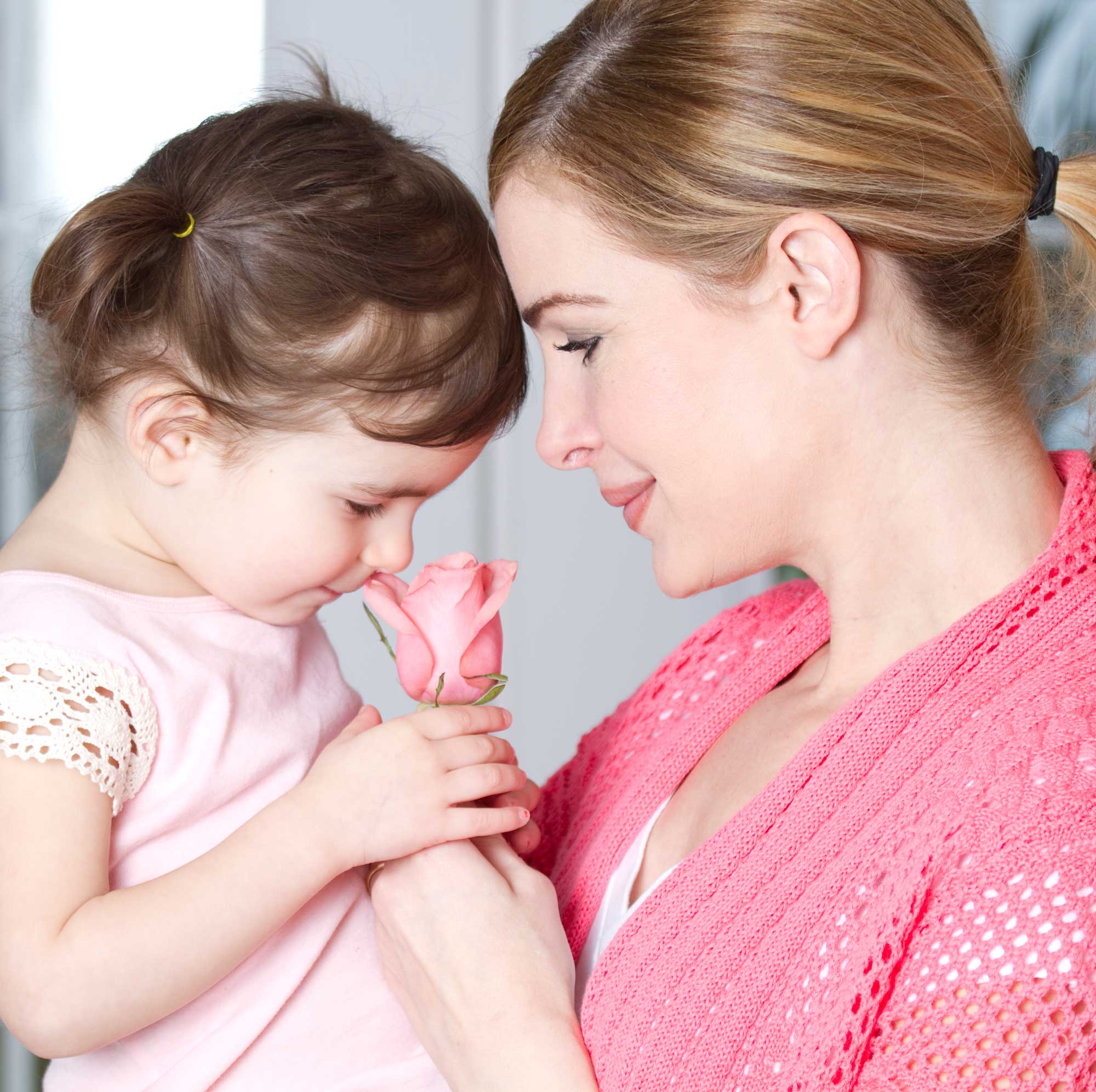NEW YORK – Fruit flies turn to a specific choreography when laying eggs: Proboscis extension. Walk. Bend. Burrow. Egg out. Detach. Groom. Reset. And repeat. It’s a sequence of movements you almost could imagine a dance instructor calling out during a class.
Kevin Cury, PhD, an associate research scientist in the Axel lab at Columbia’s Zuckerman Institute, has devoted the last decade to watching and recording this iconic reproductive sequence, first with his own eyes and later with AI-assisted video technology.
“Whether it’s a fruit fly laying eggs in the optimal location to ensure their offsprings’ survival or a person crossing a busy street, I want to understand how the nervous system enables organisms to do what they do,” said Dr. Cury.
Published today in Nature Neuroscience, the Columbia researchers share their discoveries. They found that several distinct sets of neurons, or nerve cells, confer unanticipated flexibility to the choreography of repeating egg-laying events. One of these newly identified types of neurons are CMU (Circular Muscle of the Uterus) neurons (green in the image above). These help control uterine motions that usher eggs into the fly’s egg-laying appendage, the ovipositor (magenta in the image).
“These motor neurons are the end-point of a pivotal decision-making process that affords adaptability in the fly,” said Dr. Cury.
Should a fly push her eggs into a particular location on a surface (of a fermenting fruit, for instance) or hold off for a more beneficial spot? CMU motor neurons enact her decision, using input from touch-sensitive hairs on the ovipositor. A different set of sensory neurons can then track the real-time position of the egg as it is extruded. With this stream of information, the fly can opt to greenlight the next egg-laying cycle, or for another uterine push, or take a pause and explore elsewhere.
Dr. Cury says these findings help to reveal basic principles underlying how organisms evolved to have flexible, survival-enhancing behaviors and choices in accordance with different or changing environments.
To learn more, read the paper, “Flexible neural control of transition points within the egg-laying behavioral sequence in Drosophila,” published today in Nature Neuroscience.



